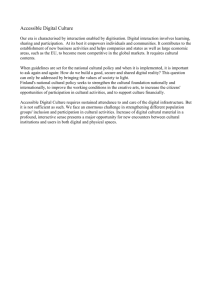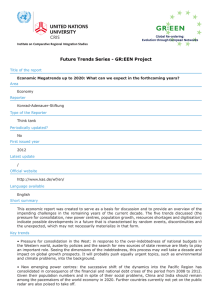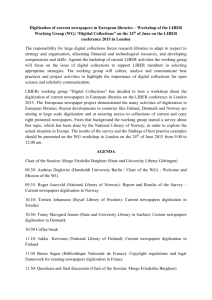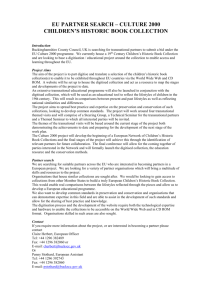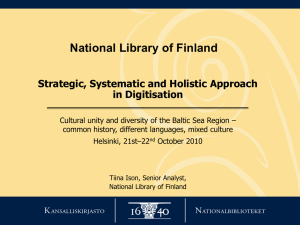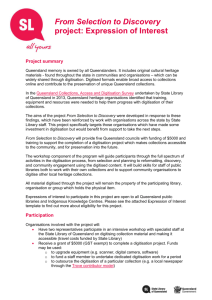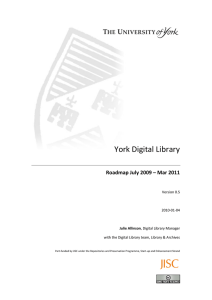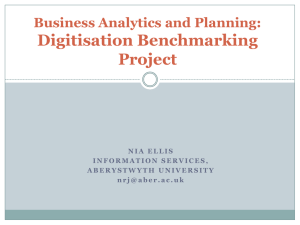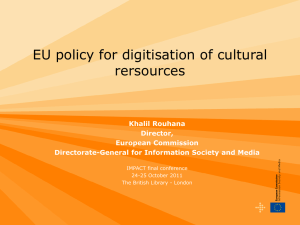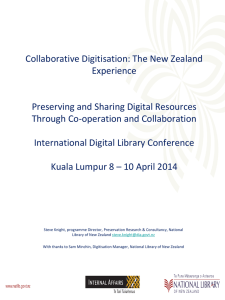Livermore_RapidDataEntry
advertisement
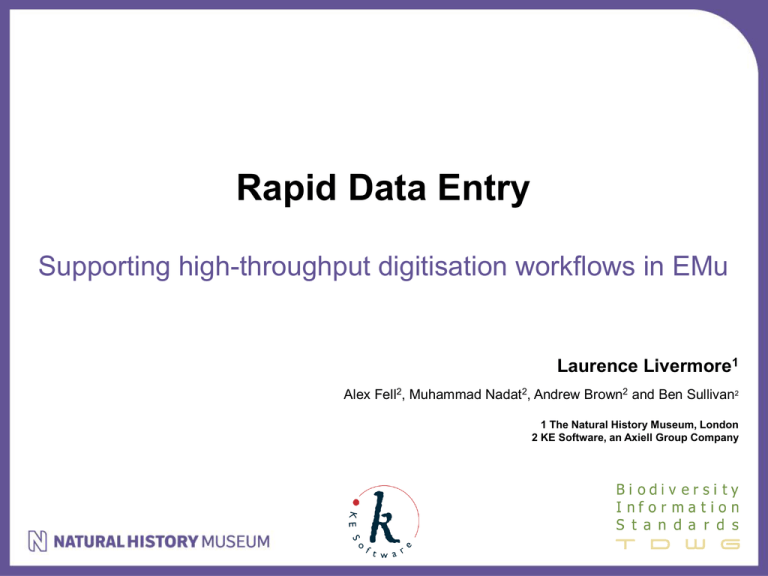
Rapid Data Entry Supporting high-throughput digitisation workflows in EMu Laurence Livermore1 Alex Fell2, Muhammad Nadat2, Andrew Brown2 and Ben Sullivan2 1 The Natural History Museum, London 2 KE Software, an Axiell Group Company The Digitisation Challenge • Increased government and public expectation • Aim to digitise 20 million specimens in 5 years • Current CMS little provision for rapid data entry • Need new tools to support digitisation Solving the problem – Rapid Data Entry (RDE) • Browser-based interface for KE EMu • Customisable “apps” • Support rapid data entry • Bulk record creation • Field validation • Normalise and atomise data • Project-based approach Project-based Digitisation • Managed by one or more “leads” • People may be members of more than one project • Project information stored in the collections database • Most projects will have multiple project-specific “apps” Project Dashboard • Permission dependent • Three “app” categories: – Forms – Editors – Statistics • Multiple apps support various stages/components of digitisation Forms • Creates new records, including label transcription • Record sets can be filtered • Filtered records are offered to editors/transcribers randomly • Bulk editing and customised operations through scripts Editors • Global updater • Resolve attachments • Apply consistency • More targeted than EMu global editor • Also created by project lead Statistics • Simple reporting mechanism • Based on record status • Visualisation tool – Bar chart – Pie chart Project Creation & Administration • Browser-based configuration • Can reference any backend field • Permissions can be set per users on both projects and apps Example Project Workflow – Botanical Sheets Form 1 - Stub record creation from barcoded sheets Form 2 - Transcription of localities and collectors Editor 1 - Normalisation of localities Editor 2 - Normalisation of collectors Future RDE Development • UX/UI improvements (desktop/tablets) • Record navigation and management • Ongoing improvements for NHM’s digital collections programme • Support for non-digitisation activities • Statistics and reporting Advantages & Disadvantages + Apps are very flexible + No clientside installation required + Display and customisation does not (necessarily) require core client modifications + Steamlined field selection allows for rapid data entry + Digitisation occurs directly into collections database means all data are in one place from creation through to + Normalisation tools within collections database + Support for mobile/tablet devices allows novel/unanticipated workflows +/- Apps and record sets need to be configured by a Data Manager/super user +/- Complex normalisation (of complex data) requires desktop client - Requires WiFi in collections areas - Mobile/tablets less suitable for typing - Another system and interface to support and maintain New Workflows • Applications outside of rapid digitisation – Specimen relocation & loans – Condition checking & collections audit – Data capture from visiting scientists – Crowdsourcing Original photograph taken by John Cummings http://bit.ly/1vTrzvk Acknowledgements Management and testing: Darrell Siebert, Annette Ure and testing staff (curators and data managers) Software development: Alex Fell, Muhammad Nadat, Andrew Brown and Ben Sullivan (KE Software)
